The kick drum is often considered the backbone of a musical track, setting its pace and driving its rhythm.
Like the heart in our bodies, it ensures that everything else moves and vibes in harmony.
When manipulated correctly, it can elevate your beats to an unparalleled level of professionalism and appeal.
However, if you’re uncertain about its dynamics or how to properly leverage its potential, the resulting imbalance can muddy your mix or leave it sounding amateurish.
In today’s article, we’ll be breaking down:
- Kick drums in all their glory ✓
- The difference between kick drums & bass drums ✓
- Achieving a balanced sound ✓
- Professional kick drum techniques ✓
- Intriguing beat patterns ✓
- Advanced drum methods ✓
- A bonus section for live drummers ✓
By the end of this guide, the kick drums in your beats will be distinguishable and truly shine.
NOTE: While our platform primarily caters to digital music producers, we understand the invaluable role of live drumming in music creation.
Therefore, we’ve included tips, tricks, and knowledge vital for live drummers in the second half.
So, let’s dive in…
Table of Contents
Understanding the Heartbeat: The Kick Drum
The kick drum is often seen as the heartbeat of a track.
Let’s delve deeper into understanding its uniqueness, its difference from bass drums, and its evolution in the digital age.
-
What Makes a Kick Drum Special?
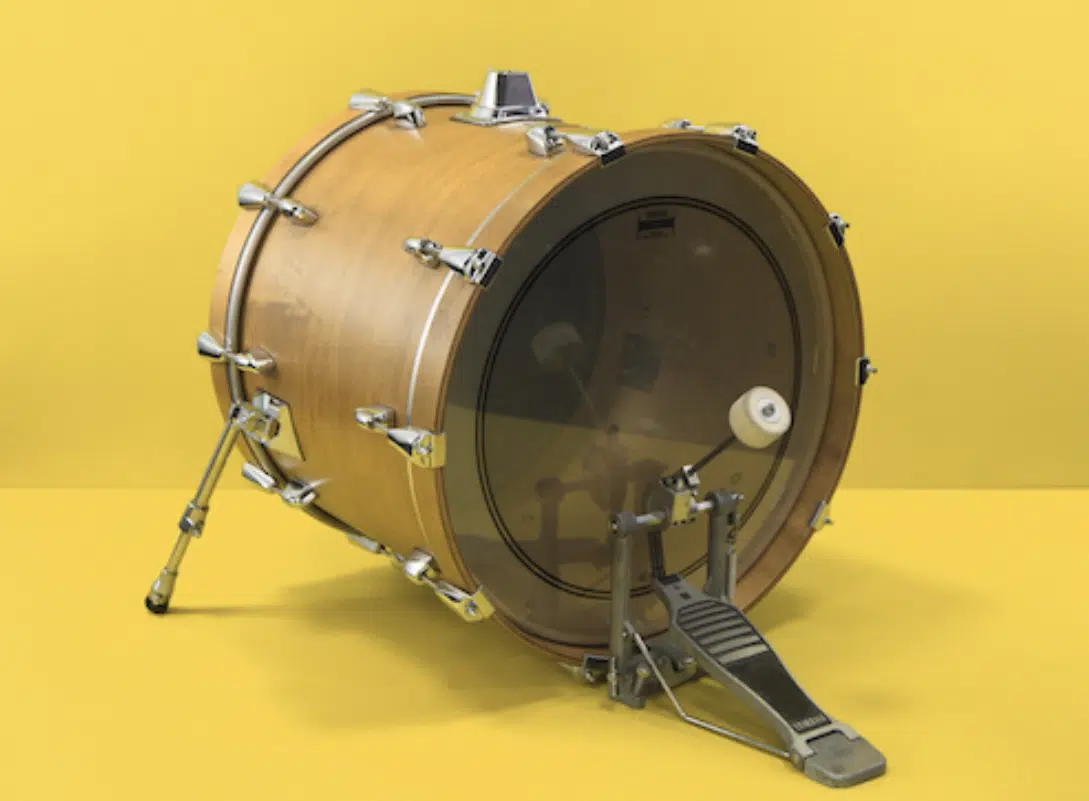
The kick drum, often dubbed by musicians as the heartbeat of a track, sets the pace and rhythmic foundation for most genres.
It’s the low-frequency punch that listeners feel in their chest 一 driving the emotional and physical response to music.
Unlike other drums, the kick drum has a unique depth and resonance.
Its design, from the drum head to its size, is engineered to produce deep, low frequencies that other drums can’t match.
As a producer, understanding the dynamics of the kick drum can help in creating patterns that resonate.
As well as produce tracks that captivate audiences from the start.
-
Kick Drum vs. Bass Drums: Clarifying the Mix-Up
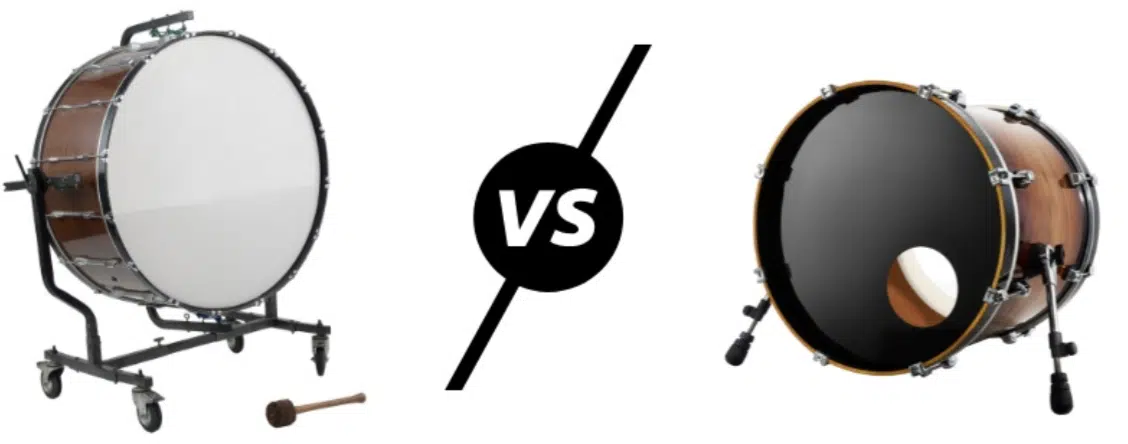
When diving into the world of drums, it’s not uncommon for newcomers to confuse the kick drum with bass drums.
While they share similarities and often overlap in certain settings, they do have distinctive characteristics worth noting.
#1. Role & Function
The kick drum, often just called the “kick,” is an essential instrument of a drum set, especially in genres like hip-hop and trap.
It delivers the foundational beat 一 creating a rhythmic pulse that drives a track forward.
On the other hand, bass drums, which are common in orchestra and jazz marching bands, serve to provide low-frequency tonal support.
They accentuate and protect particular moments, which adds depth and resonance to the overall sound.
#2. Size & Shape
Typically, kick drums in a drum set are horizontally positioned and played using a pedal.
They’re designed for quick responsiveness and consistent sound 一 allowing drummers and producers to craft that distinct punch.
Bass drums are usually larger and vertically oriented, played with a mallet or beater.
Their size gives them a deeper, more resonant sound compared to the more attack-focused kick drum.
#3. Tuning & Sound
While both the kick and bass drum emphasize low frequencies, their ‘tune process’ can differ.
- Kick drums 一 Often tuned for a tighter, punchier sound suitable for fast-paced beats.
- Bass drums 一 Might be tuned to have a lingering resonance.
They add to the ambiance of an overall piece.
#4. The Digital Realm
In digital music production, the terms “kick drum” and “bass drum” might be used interchangeably.
However, it’s crucial to recognize the distinction.
When searching for samples or virtual instruments, understanding the difference between a kick drum and bass drums can significantly impact the sound of your mix.
By distinguishing between the kick drum and bass drums, you can gain a deeper understanding of percussion.
As well as refine your skills in selecting the right drum for the desired musical effect.
-
Kick Drums in the Digital Age: A Revolution

The digital age ushered in an era of unprecedented growth and innovation in music production.
With the advent of sophisticated software and powerful hardware, the once analog domain of music recording and creation transitioned into the digital realm.
This shift significantly impacted the way kick drums were both produced and perceived.
Earlier, producers depended solely on making a physical kick drum to capture its unique sound.
But with digital tools at their disposal, they now had the luxury of:
- Synthesizing
- Sampling
- Layering various kick drum sounds
These advanced tools enabled producers to craft a kick that perfectly fit the mood and genre of their track.
Moreover, digital platforms like DAWs (Digital Audio Workstations) gave producers an in-depth visual of the kick’s waveform.
This visual guide made it easier to manipulate the kick’s transient, body, and tail 一 ensuring it sits well within the mix.
Enhancing the Kick’s Sound in a Hip-Hop Mix
So, you’ve got the basics down…
Now, let’s transition into perfecting that kick sound and understanding its relationship with the bass.
As well as employing techniques for a deeper, punchier kick.
-
Achieving a Balanced Sound
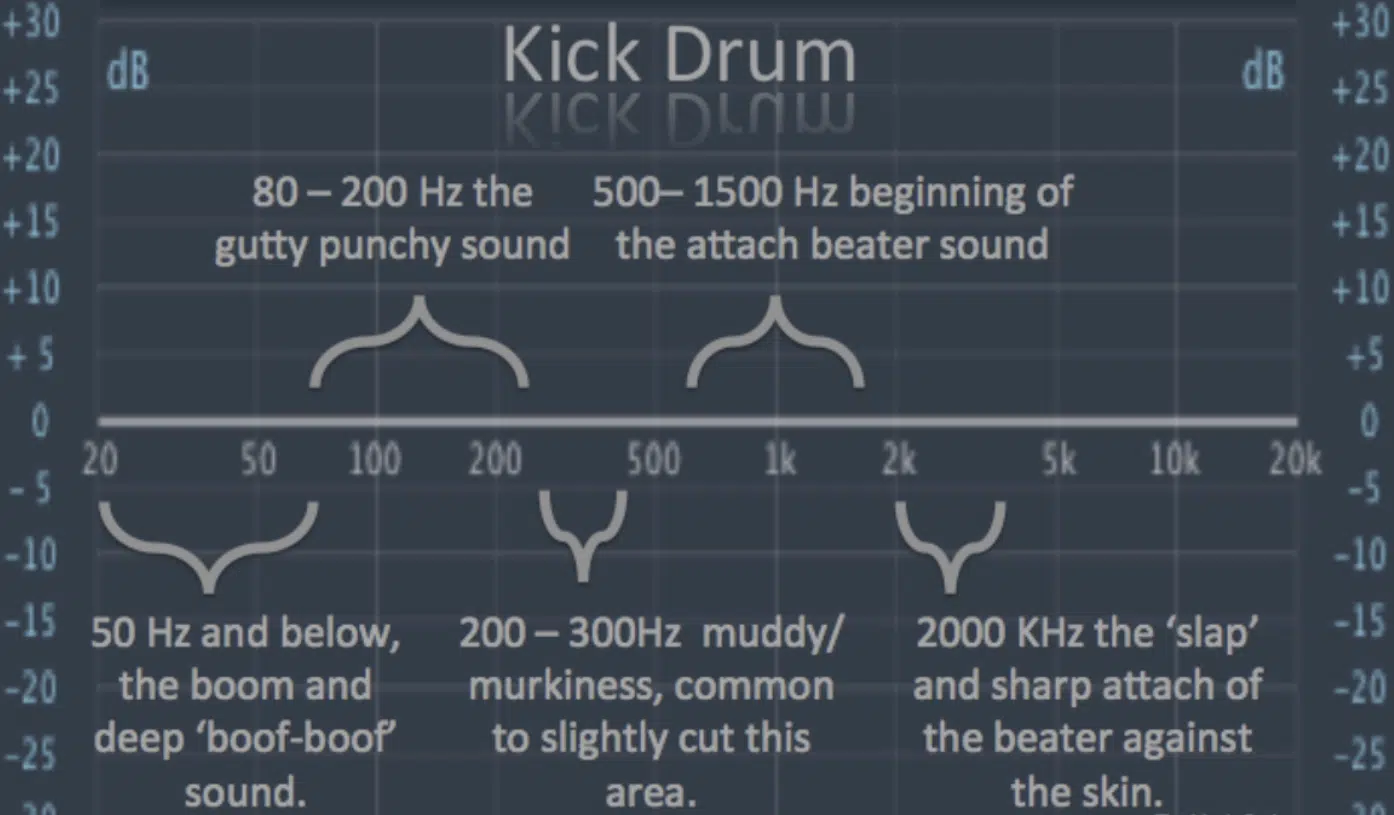
A balanced sound is vital when it comes to your kick drum, as it occupies both the low-end and mid-frequencies of your mix.
To achieve this balance, one must understand the dynamics of equalization (EQ) and compression; two fundamental aspects of music production.
When EQing your kick drum, it’s essential to first identify any problematic frequencies that might be causing muddiness or boominess.
Cutting these out ensures clarity.
On the flip side, a slight boost around the punchy mid frequencies can make your kick more present in the mix.
Compression, on the other hand, is about controlling the kick drum’s dynamics.
Applying mild compression can glue your kick’s sound and ensures consistent levels 一 allowing it to punch through the mix without overwhelming other elements.
A well-balanced kick drum (and percussion section) is the result of careful EQing and thoughtful compression.
-
The Interplay Between Kick & Bass
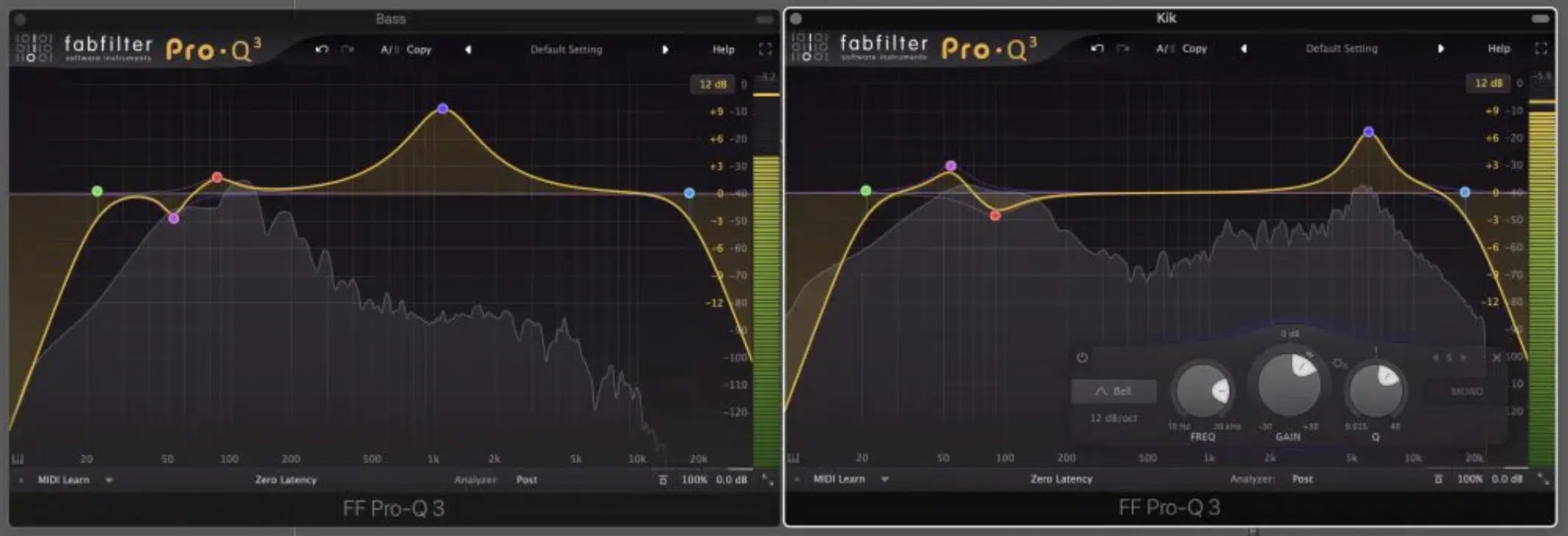
The kick-and-bass drum relationship in hip-hop is akin to a dance, with each playing off the other’s moves.
It’s a delicate interplay that, when mastered, can elevate a track immensely.
The key is ensuring that the kick and bass occupy their own spaces in the frequency spectrum.
Sidechain compression is a popular technique (where the bass ducks every time the kick hits) that lets the kick shine through.
Also, experiment with layering.
By using different kick samples or synthesizing your own, you can achieve a unique sound that perfectly complements your bassline.
Just remember, you always have more options, so you can get as creative as you’d like.
Achieving a Deeper, Punchier Kick
The kick drum is undeniably the backbone of many tracks, especially in hip-hop.
Achieving that perfect deep and punchy kick can set your music apart, making it resonate more powerfully with listeners.
Let’s dive into the specifics of how to craft that impeccable sound.
1. Layering & Sample Selection
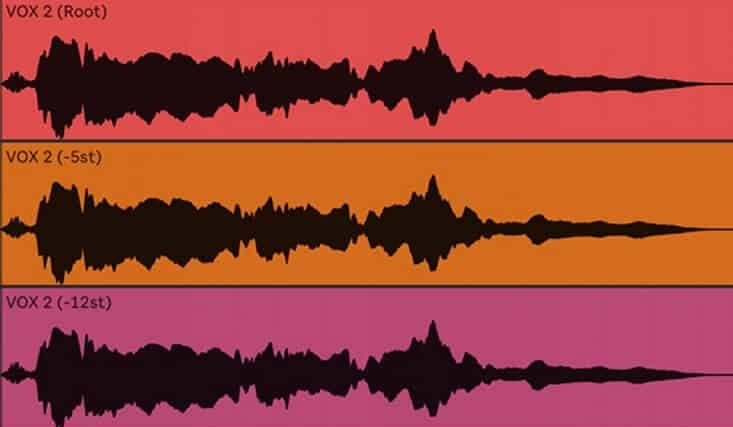
One of the foundational techniques to achieve a deeper kick is by layering multiple samples.
By combining a low-end heavy kick with another that has a pronounced mid or high-end punch, you can craft a kick that’s both deep and sharp.
NOTE: The key here is to ensure phase alignment between the layers to prevent any phasing issues which might weaken the sound.
This can be done by making sure the frequency ranges of each sample don’t overlap.
2. EQ & Frequency Sculpting
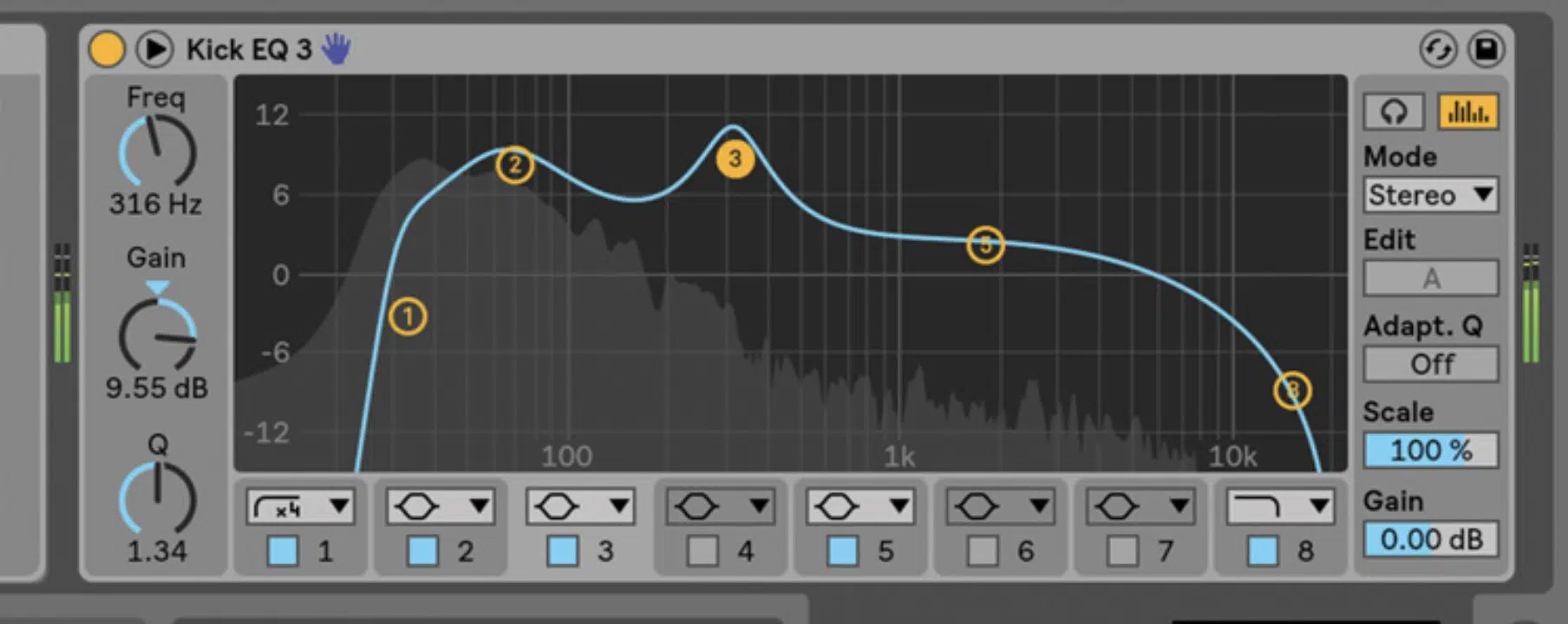
Using an equalizer (EQ) is vital to carve out the right frequencies and emphasize the kick’s punch.
- Boosting around 50-100 Hz 一 Enhances the kick’s thump.
- A slight boost between 2-5 kHz 一 Accentuate its snap.
However, it’s equally essential to cut out any unnecessary frequencies that might muddy up the mix (typically around the 300-400 Hz range).
3. Dynamic Processing with Compression
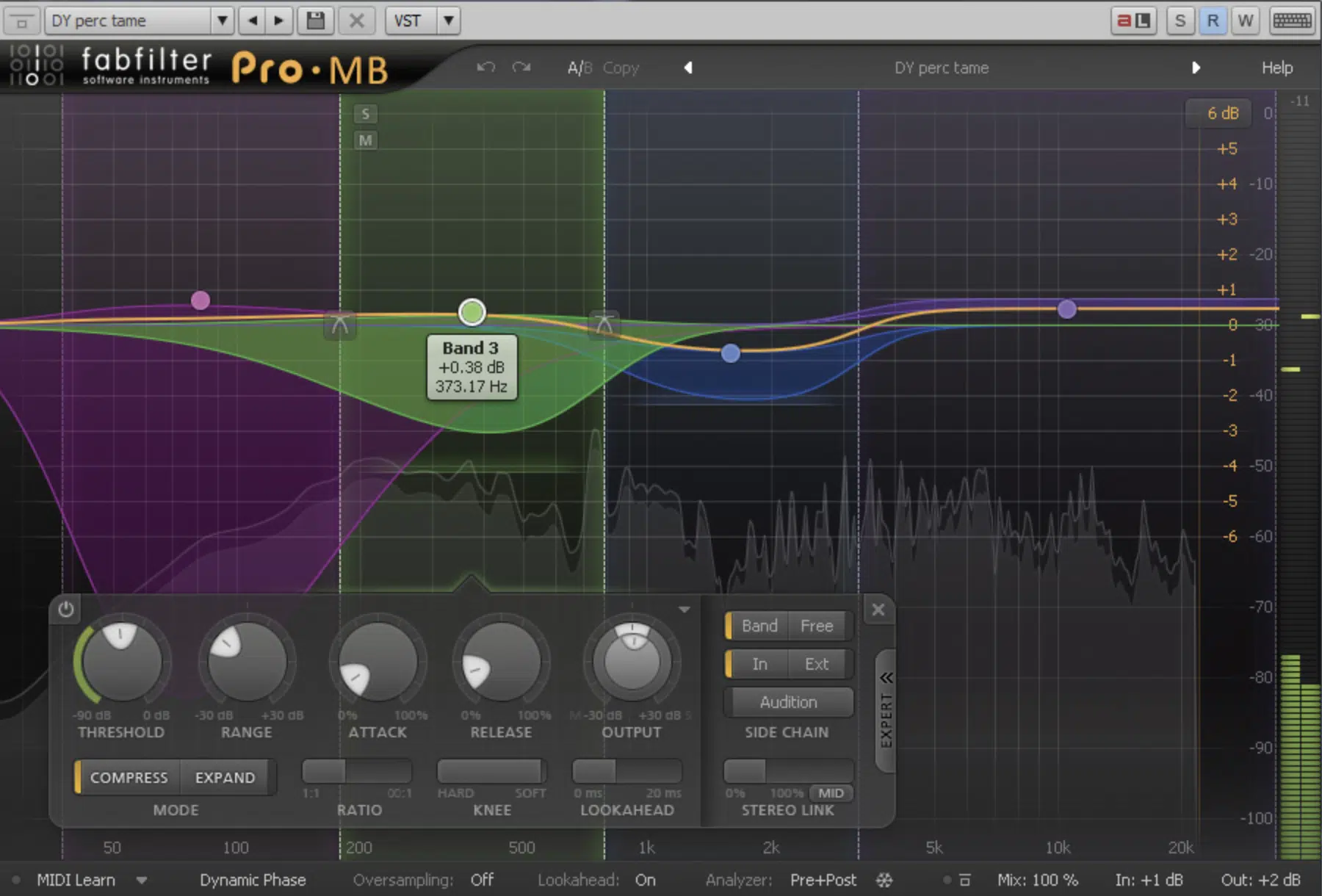
Compression, as we touched upon, is a critical tool to add punch to your kick.
By setting a fast attack and a moderate release, the compressor clamps down on the transient 一 making the body of the kick more pronounced.
This can add a perceptual punchiness to the drum.
Parallel compression, where the original and compressed signals are blended, can also be a great technique to add depth without sacrificing the kick’s natural dynamics.
4. Saturation & Harmonic Excitement
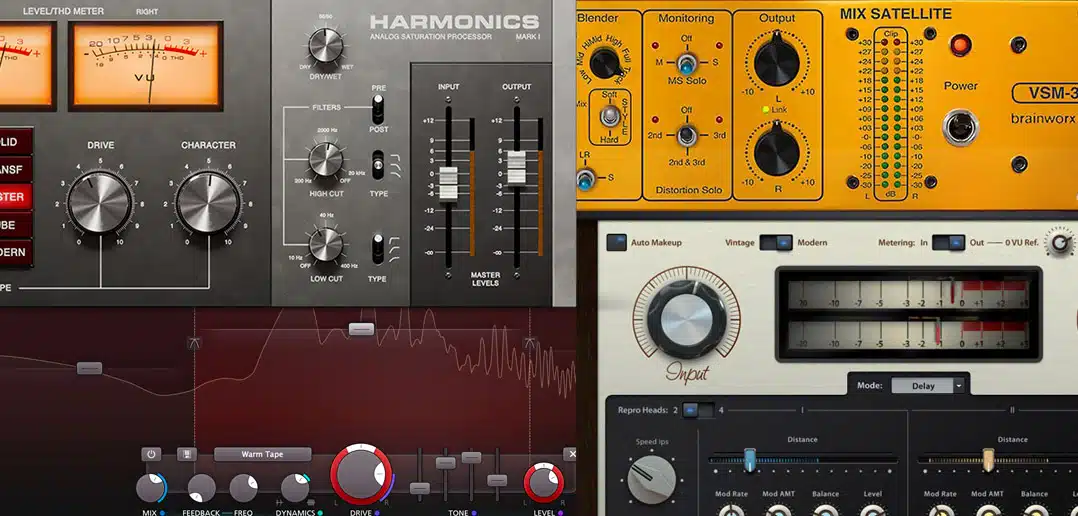
Introducing mild saturation or harmonic excitement can add warmth and fullness to a kick drum.
These processes introduce subtle overtones and harmonics, filling out the kick’s sonic spectrum and making it sound fuller in the mix.
5. Pitch Enveloping
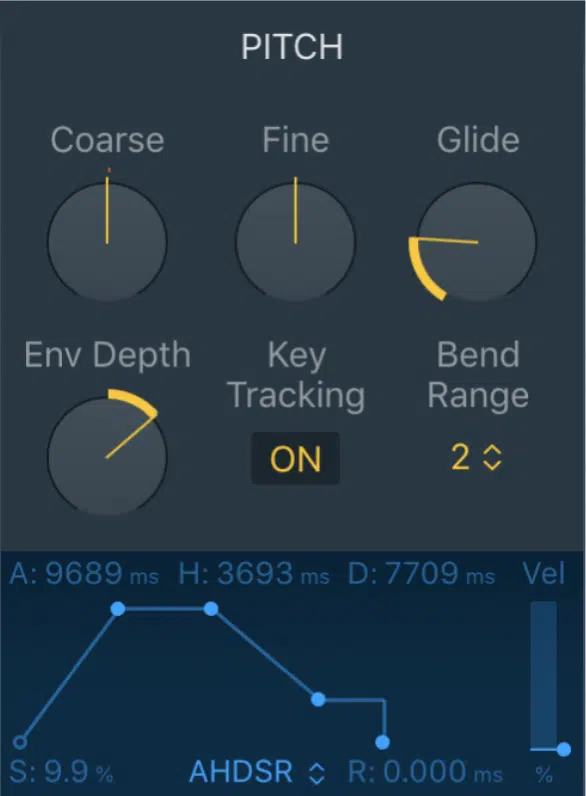
By using a quick pitch envelope that starts at a higher pitch and quickly descends to the desired note, you can add a perceptual punch to the kick.
This technique emulates the natural behavior of instruments (like toms) where the tension of the skin causes a slight pitch drop when struck.
Each of these techniques, when used properly, can elevate the depth and punch of your kick drum.
Therefore, making it more impactful in your mix.
Kick Drum Techniques: Elevating Your Beats
Now that you’ve polished the basics, let’s delve into some advanced techniques.
These tricks can truly set your beats apart, giving them a unique flavor.
-
Exploring Different Kick Drum & Beat Patterns

Every genre has its distinct rhythm and feel, and this significantly influences the kick drum patterns you’d use.
For instance:
- In hip-hop 一 The kick often follows a syncopated pattern; providing both groove and space in the beat.
- In more electronic & dance genres 一 You might find a 4-to-the-floor pattern.
A 4-to-the-floor pattern is where the kick hits every beat and drives energy consistently.
This pattern is iconic for genres like techno, house, trance, and psytrance.
Venturing into genres like trap or dubstep, the kick drum patterns can get complex, interspersed with rapid hi-hats and snare rolls.
Exploring various patterns and understanding their impact on the overall vibe of the track is a skill every digital music producer should master.
-
Adding Rolls & Flair to Your Drum Play
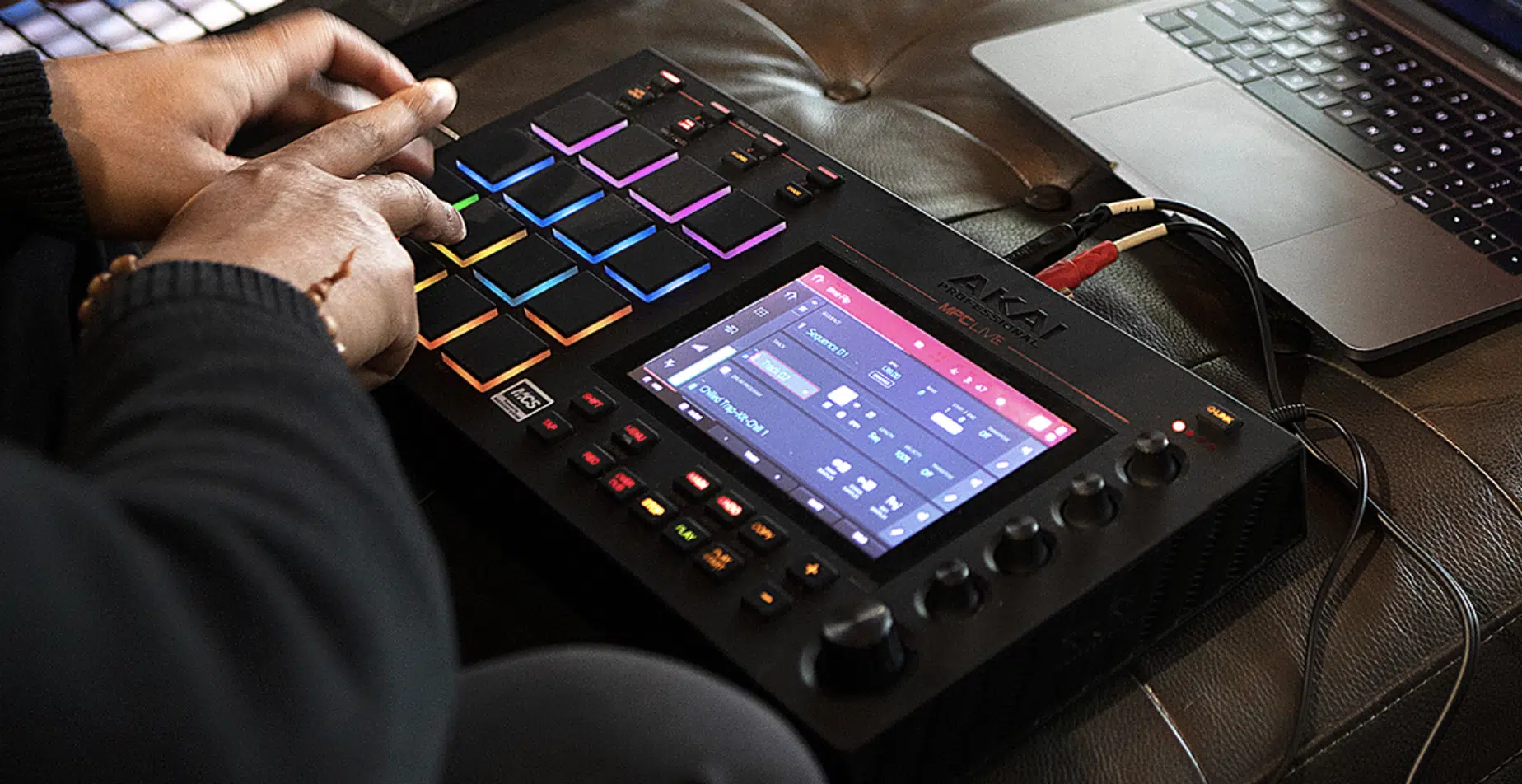
Drum rolls and flairs aren’t just reserved for snares and hi-hats; kick drums can benefit from them too.
These techniques add:
- Variation
- Excitement
- Unexpected turns
- Intriguing qualities
For instance, a quick double kick before the drop can act as a tension builder 一 making the subsequent section even more impactful.
Or, in the midst of a regular kick pattern, a brief roll can break the monotony and introduce a refreshing change.
Additionally, adding slight pitch variations or modulating the kick’s tone during these rolls can add more character.
While the kick drum primarily anchors the rhythm, incorporating rolls and flairs occasionally can elevate the overall groove and dynamics of your track.
-
Using Multiple Kick Drum Samples In Your Pattern (Switch-Off)
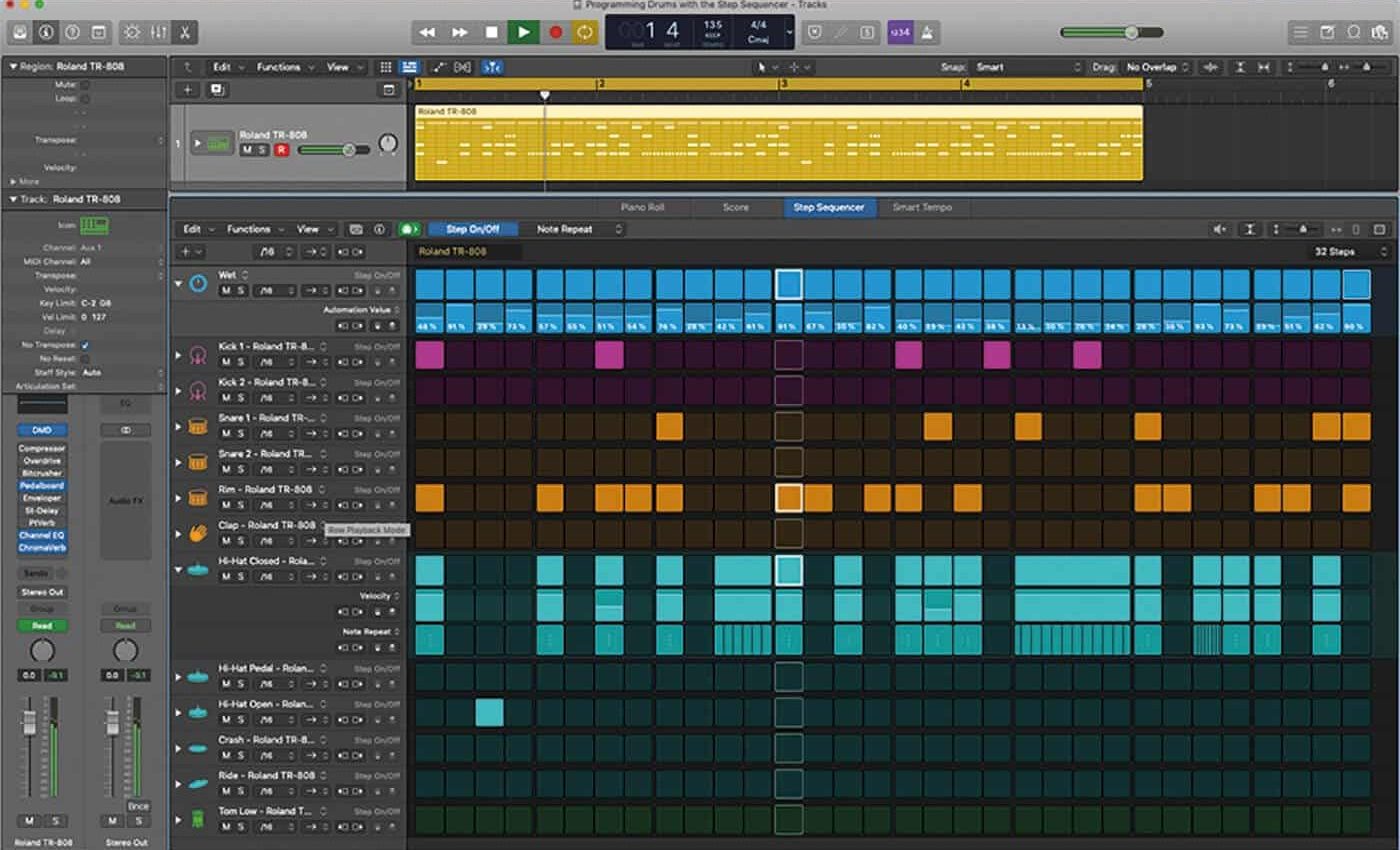
With the plethora of kick samples available today, it’s tempting to stick to one favorite.
However, alternating between different kick samples within a pattern can add depth and nuance to your beats.
Think of it as a conversation between two kick sounds:
- One might 一 Offer a deep thud.
- The other 一 Brings a sharp punch.
When used intelligently, this switch-off can add a unique rhythmic texture to your production.
To master this technique, pay attention to the tonal characteristics of each sample, and make sure they complement each other and the overall vibe of the track.
Advanced Kick Drum Techniques
Advanced techniques are where the fun truly begins, as you know.
They offer endless creative possibilities, letting you mold and craft the kick sound in unique ways.
-
Synthesizing Your Own Kick Drum With Subtractive Synthesis
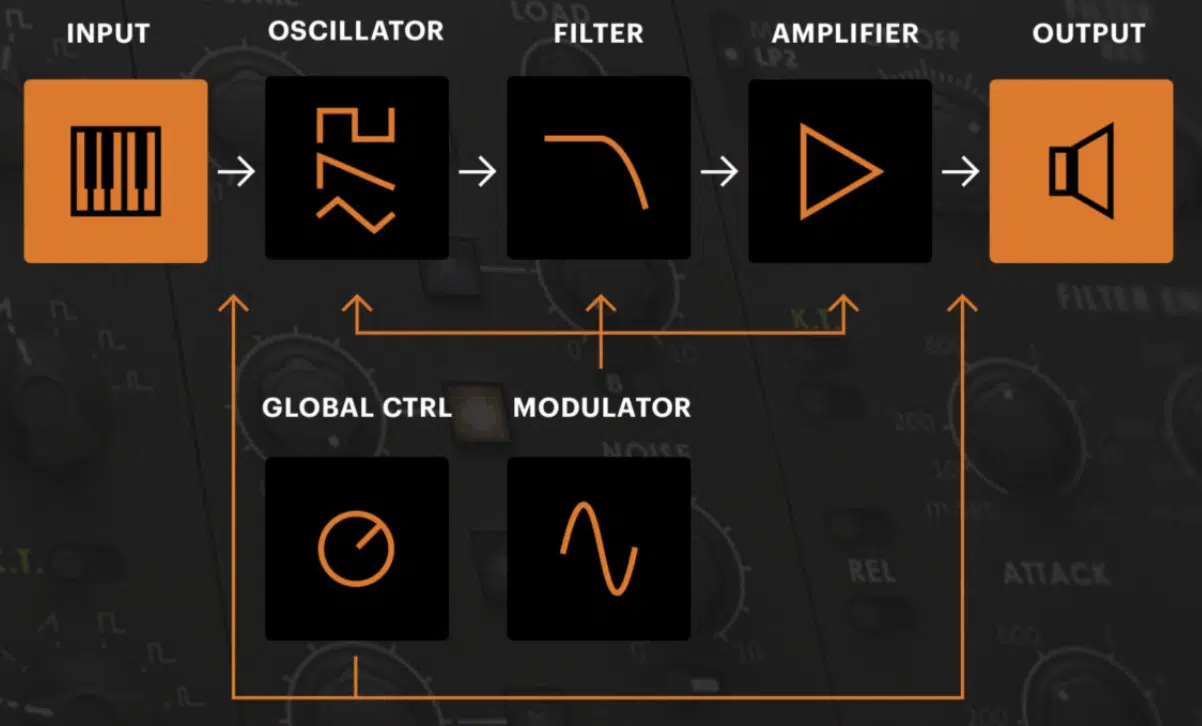
Subtractive synthesis is all about sculpting sound by removing specific frequencies.
When applied to kick drums, it allows for incredible customization 一 letting you create a kick sound tailored to your needs.
Start with a basic waveform, usually a sine or triangle wave.
You can carve out your desired kick sound by applying:
- Envelopes
- Filters
- Modulation
While it may sound daunting initially, mastering this technique can free you from relying on pre-existing samples.
Your kicks will truly be one-of-a-kind.
-
Tuning Your Electronic (Synthesized) Kick Drum
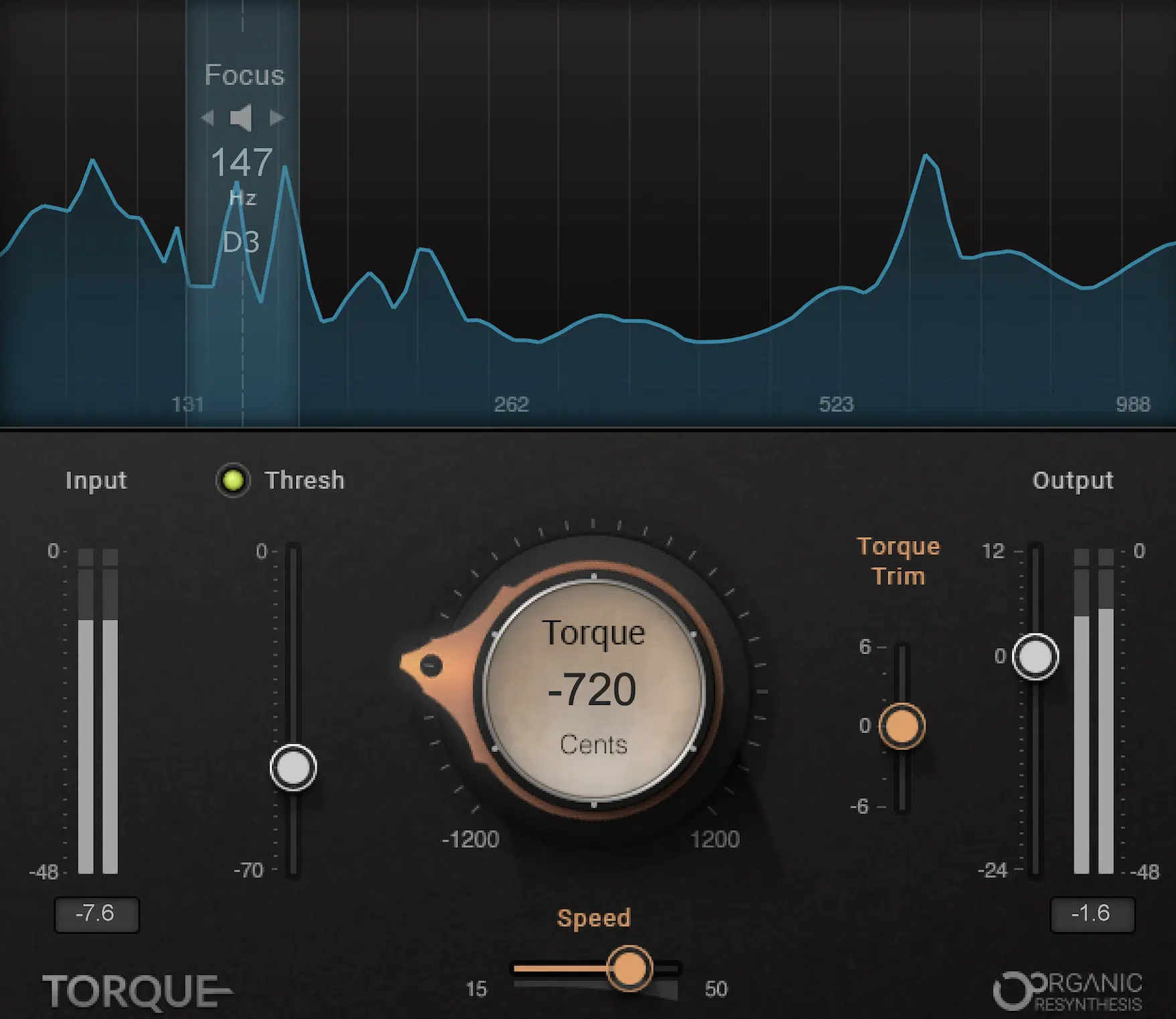
While organic instruments are routinely tuned, producers often overlook the tuning of electronic drums.
However, a well-tuned kick can:
- Sit better in a mix
- Complement the key of the song
- Deliver a cleaner tune
Utilize pitch-shifting tools in your DAW or your synthesizer’s pitch envelopes.
Aim for the kick drum to resonate with the key of your track or at least not clash with the predominant bass notes.
It’s a subtle art…
Small shifts can sometimes make a world of difference 一 so trust your ears and keep experimenting.
-
Turning A Standard Kick Into A Weeknd-Like SFX One-Shot

Sound effects (SFX) in modern tracks can add a unique flair and turn a standard beat into something memorable.
Think of the unconventional sounds in tracks by artists like The Weeknd.
By processing a standard kick drum you can transform it into an entirely new sound with audio effects like:
Such techniques allow for vast experimentation.
The key is not to get lost in the process but to always serve the song’s narrative and mood.
For Live Drummers: Breaking it Down
Live drumming and digital production aren’t worlds apart.
Let’s look at how a live drummer can optimize their kick sound and ensure the best recordings for digital manipulation.
-
Your Drum Set
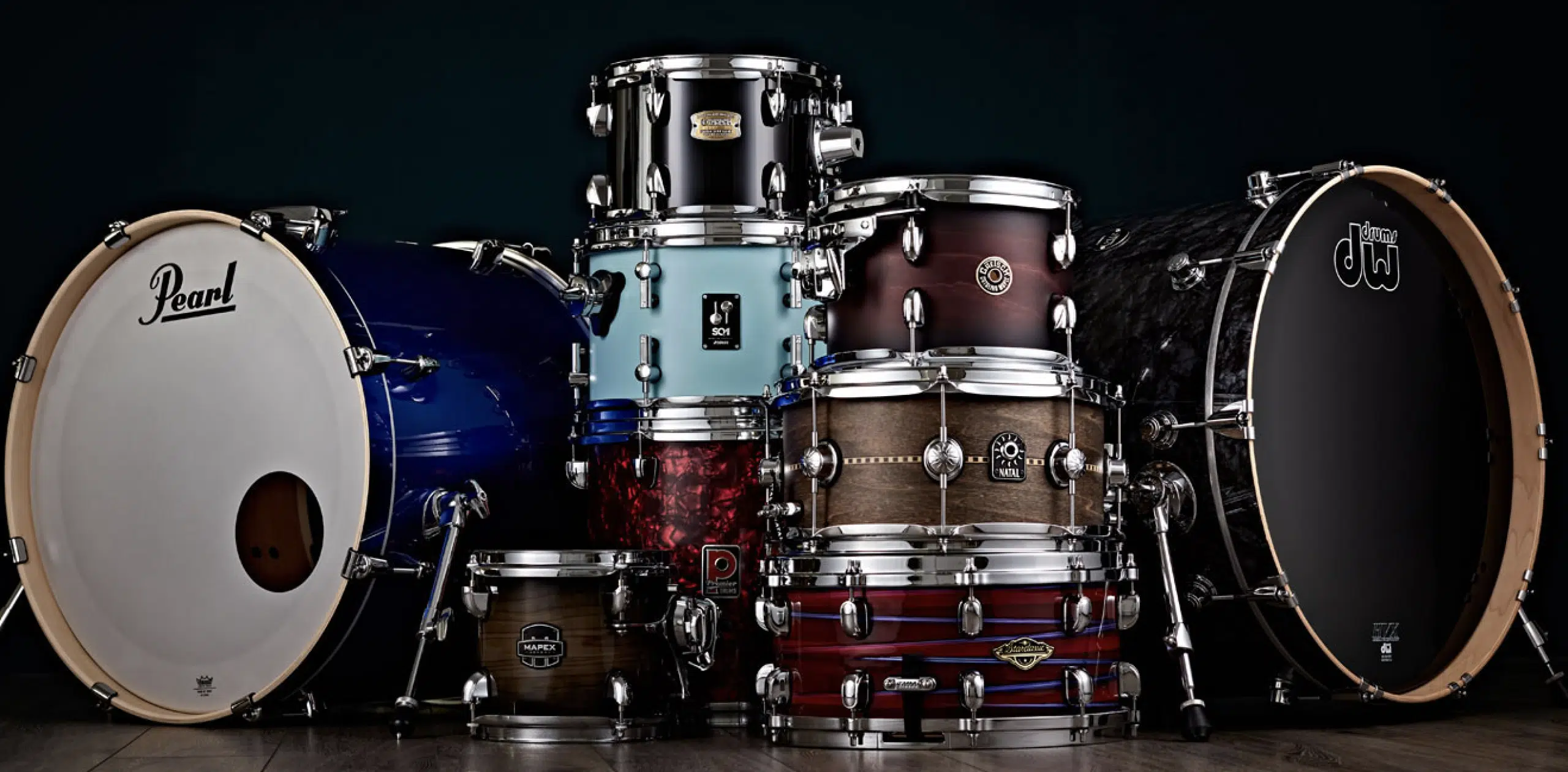
A drum set is a collection of diverse instruments.
To truly master drums, one must understand the unique sonic characteristics and roles of each component.
The kick drum, or bass drum as it’s often called in this context, is the heartbeat 一 its placement, tuning, and the materials it’s made of can greatly impact the sound.
Modern drum kits often come with enhancements like internal microphones or triggers.
These can significantly improve the recording quality, especially for digital producers.
-
The Importance of a Good Drumhead
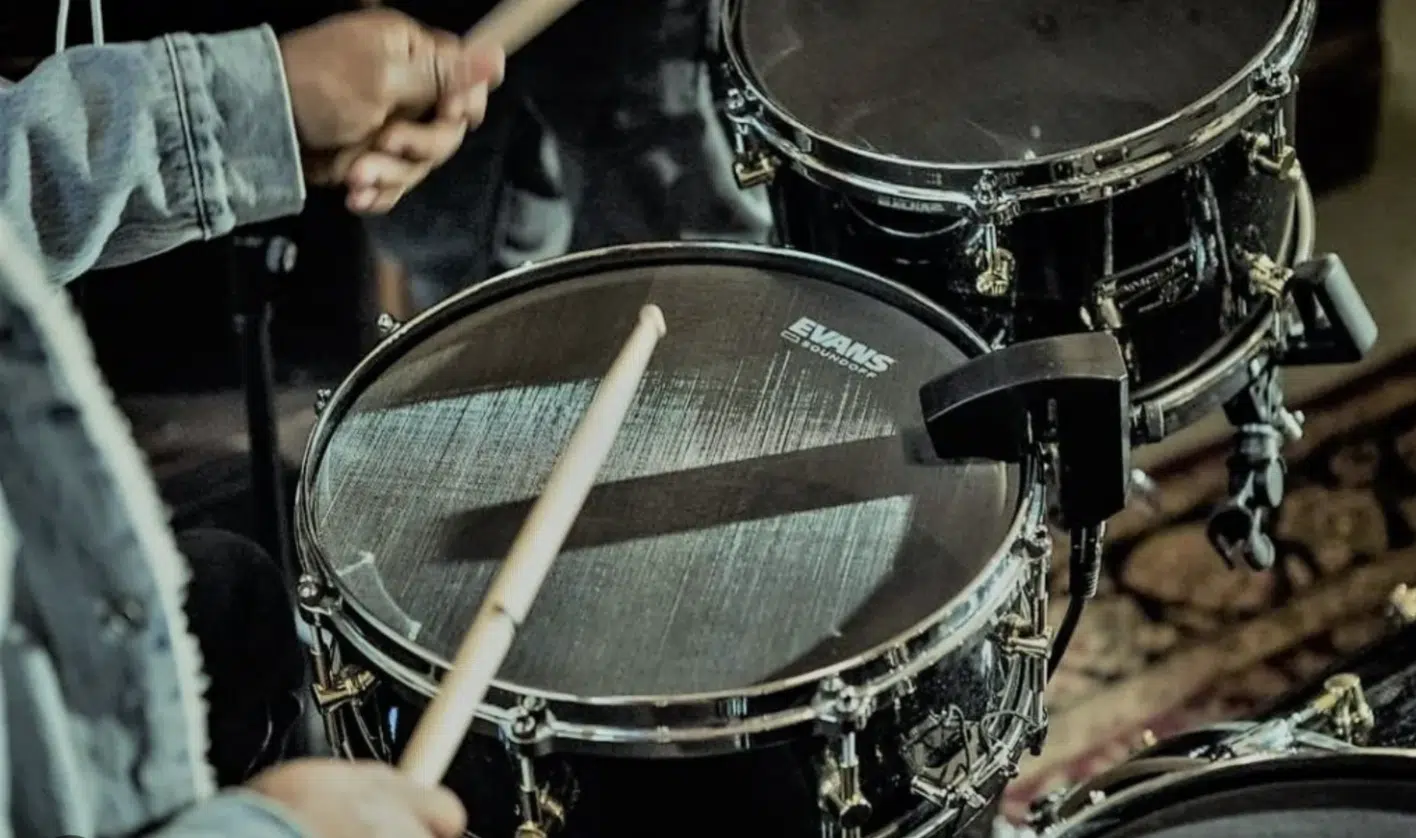
Just like guitar strings or piano hammers, the quality and condition of a drum head can drastically influence the sound output.
A worn-out drum head can lack resonance and punch.
Investing in a high-quality drum head, suited to your musical style, can bring out the best in your kick drum.
Experiment with different drum heads, like:
- Single-ply
- Double-ply
- Coated
- Clear
Each offers a distinct sound when playing, so find what drummer style resonates with you.
Also, look into a shoulder harness for optimum results.
-
The Kick Pedal
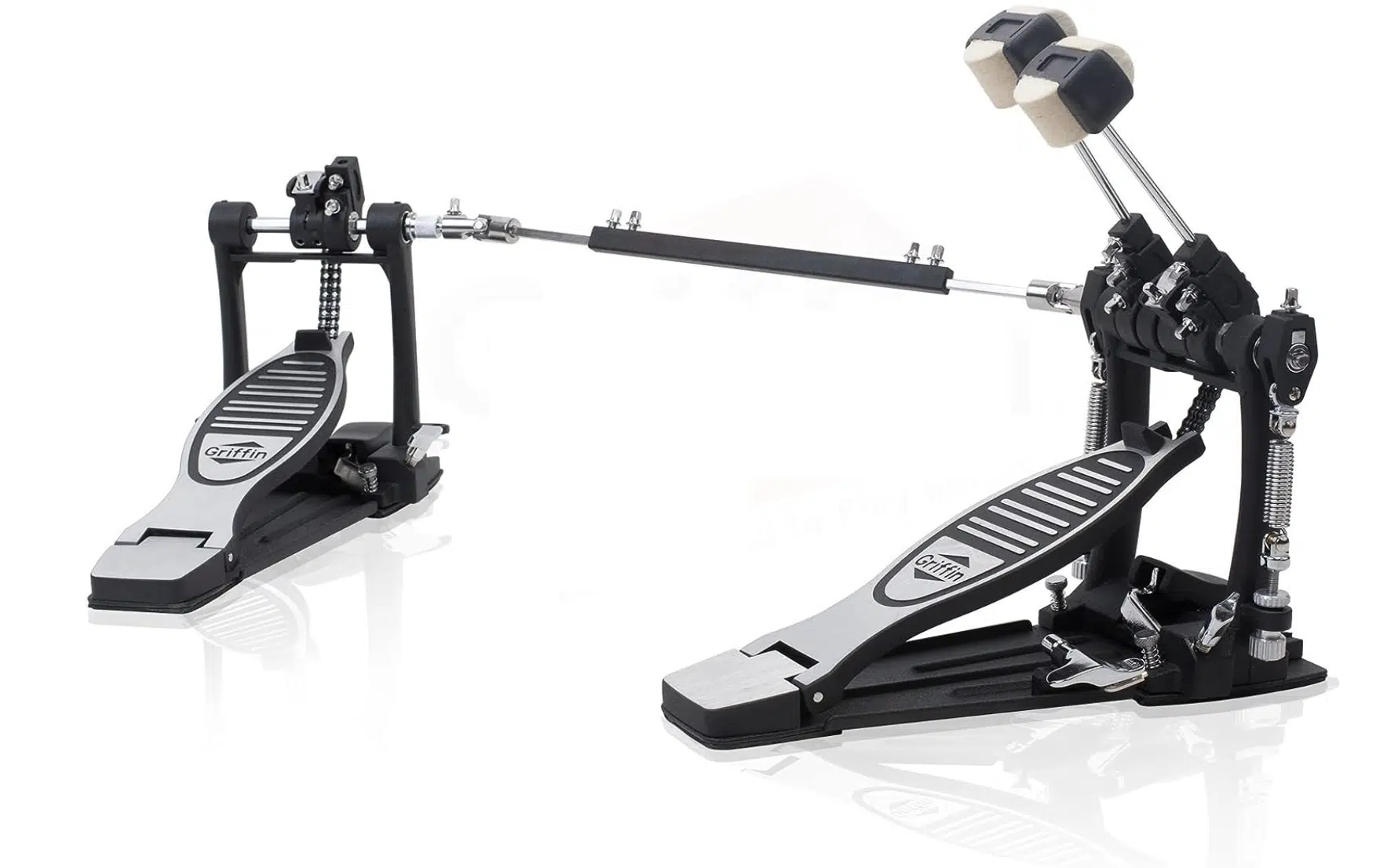
The kick pedal is the drummer’s direct link to the kick drum.
Its design, tension, and the beater’s material all influence the sound produced.
Whether you prefer a punchy attack or a mellow thud, adjusting the pedal’s tension and angle can help achieve your desired sound.
Modern pedals offer a plethora of customization options, from:
- Beater materials (felt, plastic, wood)
- To dual-chain drives for smooth operation
Make sure to experiment in order to find your sweet spot from the largest drum to the smallest.
-
Why Tuned Kick Drums Make a Difference
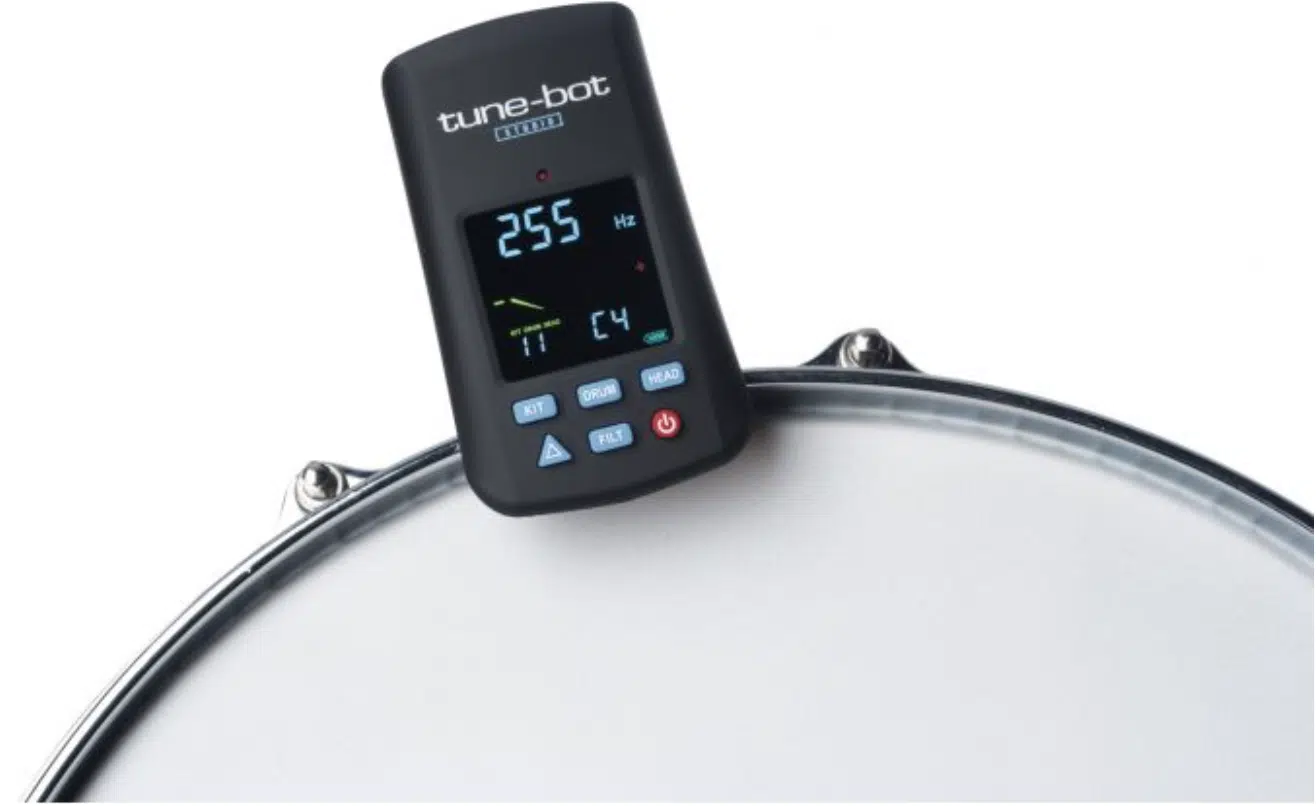
A tuned drum resonates better, offers clearer tones, and fits more harmoniously within a musical piece.
Especially in genres like hip-hop (where the kick drum plays a foundational role) its tuning can make or break the overall vibe of the track.
Begin by loosening all the tension rods on the drum head.
Strike the drum near each rod 一 tuning them gradually until you achieve a uniform pitch around the drum.
The batter head (the side you hit) and the resonant head (the opposite side) don’t always need to be tuned to the same pitch.
NOTE: Tools like digital tuners or tuning apps can assist, but your ears are the best judges.
Recording Like a Pro: Setting Up Your Kick Drum
With the right setup, your kick drum can sound studio-quality, even if you’re recording at home.
So, let’s dive into the nuances of mic placement, environment, and common pitfalls.
-
The Importance of Proper Mic Placement
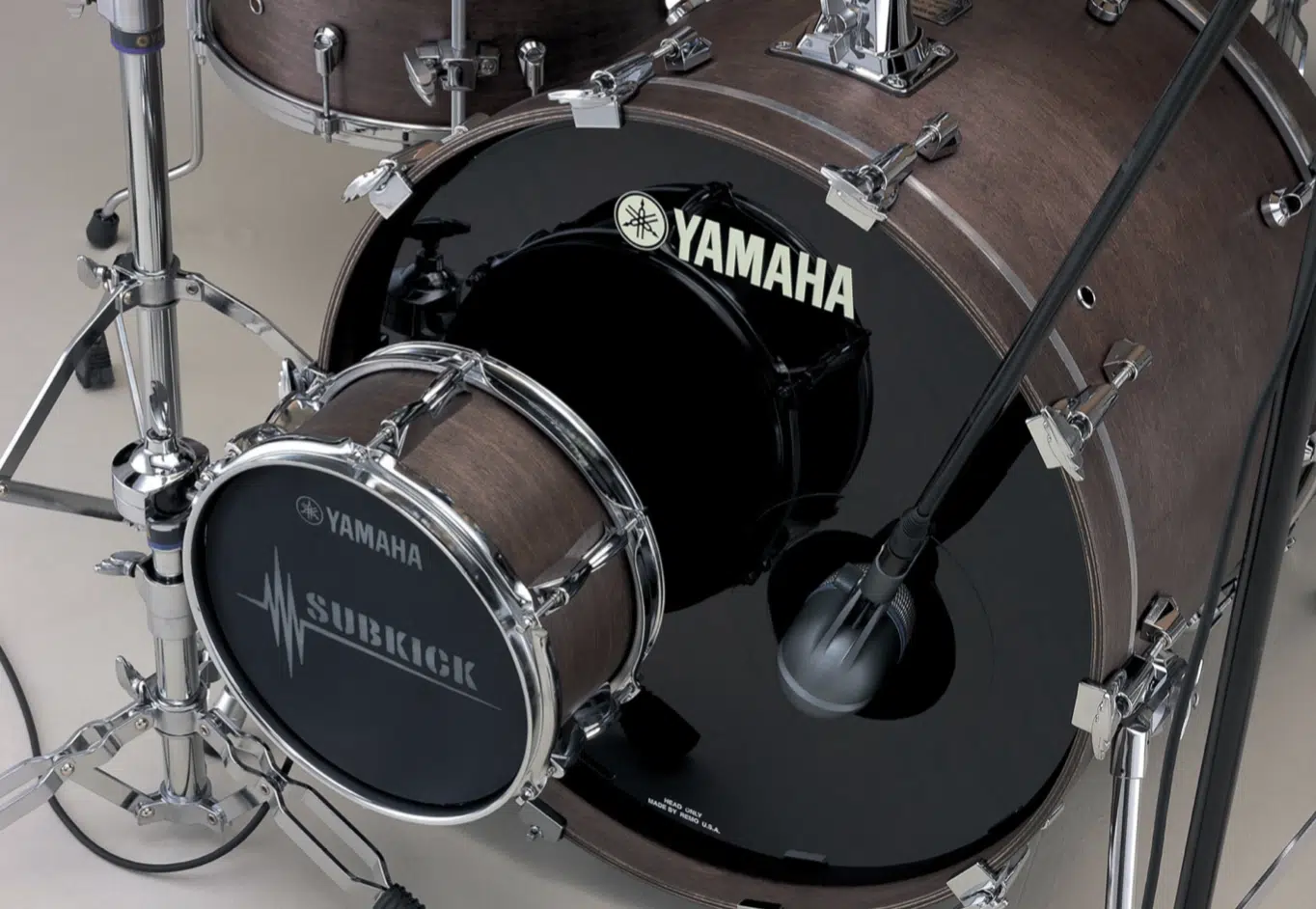
You don’t have to be a drum major to understand mic placement can significantly influence the captured sound.
- Place it too close 一 You might get an overly boomy sound.
- Too far 一 You’ll lose the kick’s punch.
Dynamic mics, often used for kick drums, capture the transient and body of the drum effectively.
Experiment with the angles and distances of your favorite gear to find the sweet spot.
Some music producers also employ a secondary microphone inside the drum or at the resonant head.
This captures a fuller spectrum of the kick sound 一 offering more flexibility during mixing.
-
Creating the Perfect Environment for Recording
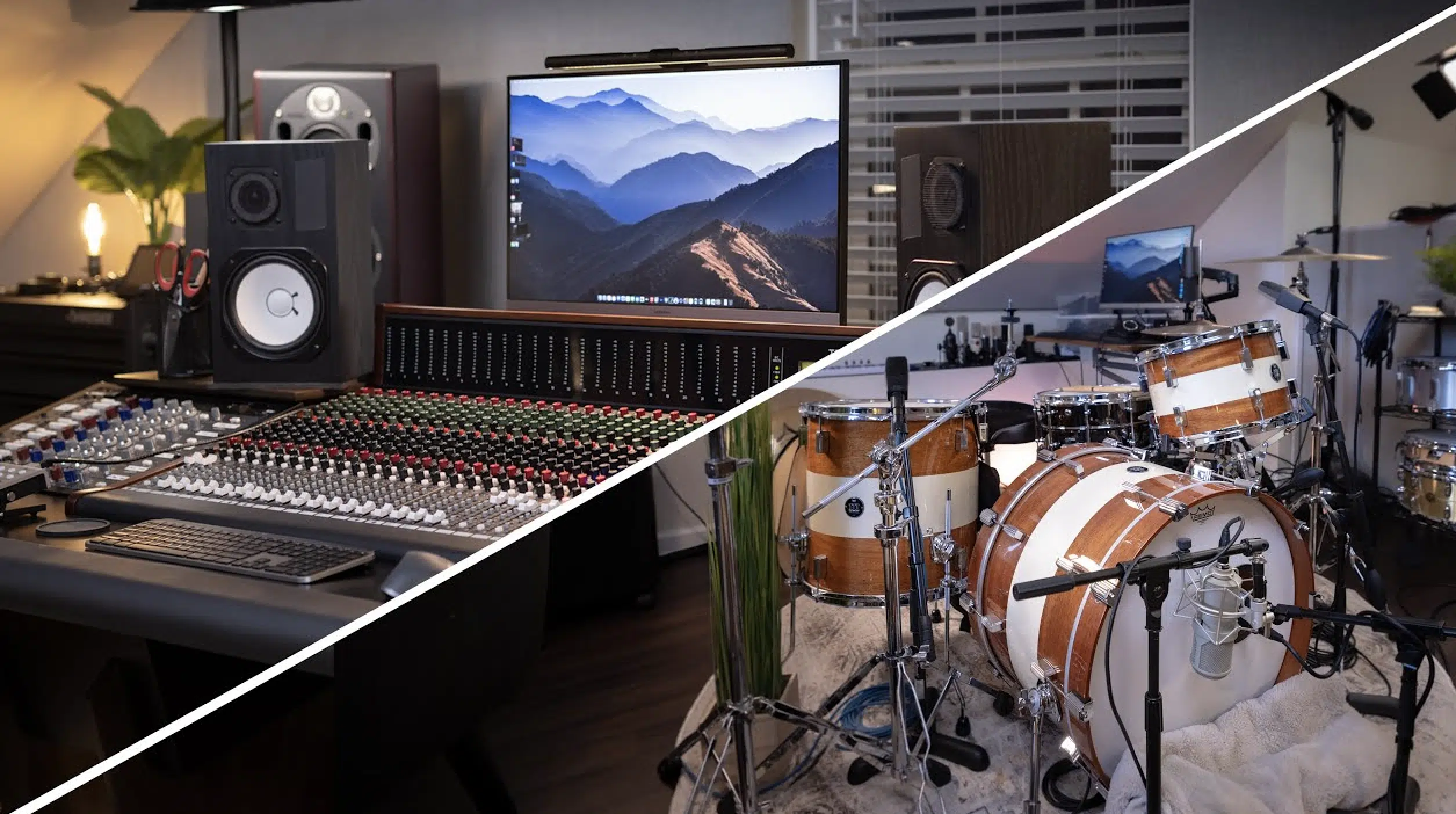
Your recording environment plays a pivotal role.
Certain things can affect the clarity of your kick drum, like:
- Unwanted echoes
- Background noises
- Room resonances (like what happens with a concert bass drum)
Consider soundproofing techniques or portable isolation booths.
Even simple measures like hanging heavy curtains or using bass traps in room corners can make a notable difference.
Remember, while some room ambiance can be desirable for certain genres (like lofi and r&b), a controlled environment generally allows for the most versatility during post-production.
Kick Drum: Final Thoughts
In the world of digital music production, the kick drum is more than just a percussive sound.
It’s a dynamic force 一 setting the rhythm and the overall mood, carving out its own space in the mix.
It’s the element that anchors a track, providing both a tactile pulse and a tonal foundation.
Given its pivotal role, it’s paramount for producers (especially in the digital world) to grasp the intricacies of crafting and manipulating the perfect kick.
As a digital music producer, you’re always on the hunt for tools that can augment your sound and elevate your tracks…
This is where the Free Black Friday Pack seamlessly ties in.
Envisioned as a toolkit for the modern producer, it’s packed with 625 unique samples, MIDI’s, and presets.
This includes elements like 15x Drum Loops, 10x Full MIDI Drum Kits, 58x MIDI Drum Patterns, and 55x Unique One-Shots (In C, E & G#).
It’s like having a seasoned drummer at your fingertips and offers you a plethora of kick drum options and much more.
As well as ensures that your tracks always stand out in a major way.
Your journey through this article has equipped you with the knowledge to harness the kick drum’s power.
Now, you’re truly equipped to let your kick drums resonate louder, clearer, and with way more impact.
Keep creating, and let every beat count!
Until next time…







Leave a Reply
You must belogged in to post a comment.